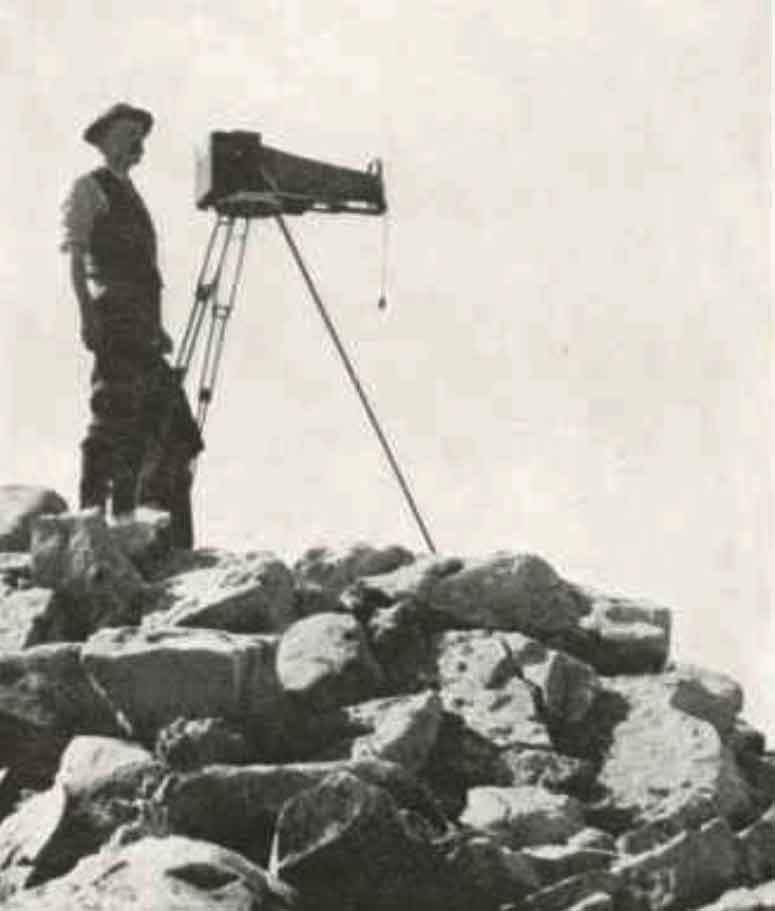
Walcott ready to take a panoramic view from the summit of Mount Field. Photo by Sidney S. Walcott. National Geographic Magazine, 1911. Internet Archive“>Internet Archive
Charles Doolittle Walcott
b. 1850 — New York Mills, New York
d. 1927 — Washington, D.C.
Walcott was married three times — to Lura Ann Rust [1843-1876], to Helena Breese Stevens [1858-1911], and to Mary Morris Vaux [1860-1940]. By his second wife he had four children: Charles Doolittle Jr. [1889-1913], Sidney Stevens [1892-1977], Helena Breeze [1894-1965], and Benjamin Stuart [1896–1917]. Charles died while a student at Yale, and Benjamin was killed in action in France in 1917 flying for the Lafayette Flying Corps.
When Walcott traveled to the Canadian Rockies during the summer in search of fossils, often his wife and children would accompany him on his expeditions.
- — and Walcott Jr., Charles Doolittle [1889–1913]. “A Geologist’s Paradise.” National Geographic Magazine, 22, no. 6 (1911). Internet Archive
- — Field notes : Canada, 1907, 1910, 1912-1913, 1916, and undated. 1912. Biodiversity Heritage Library [accessed 4/12/2025]
- — “The Monarch of the Canadian Rockies.” National Geographic Magazine, (1913):626. Internet Archive [accessed 4/2/2025]
- — “Cambrian Formations of the Robson Peak District, British Columbia and Alberta, Canada.” Smithsonian Miscellaneous Collections, Vol. 57, No. 12 (1913):328-343. Smithsonian Institution Archives [accessed 4/11/2025]
- Wikipedia. Charles Doolittle Walcott